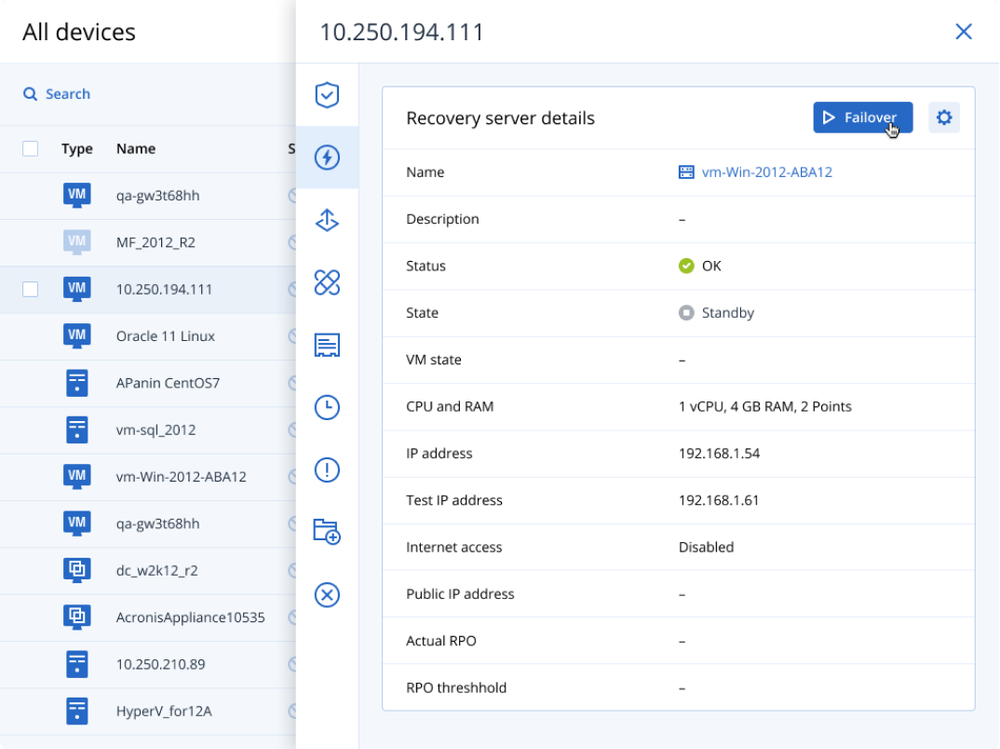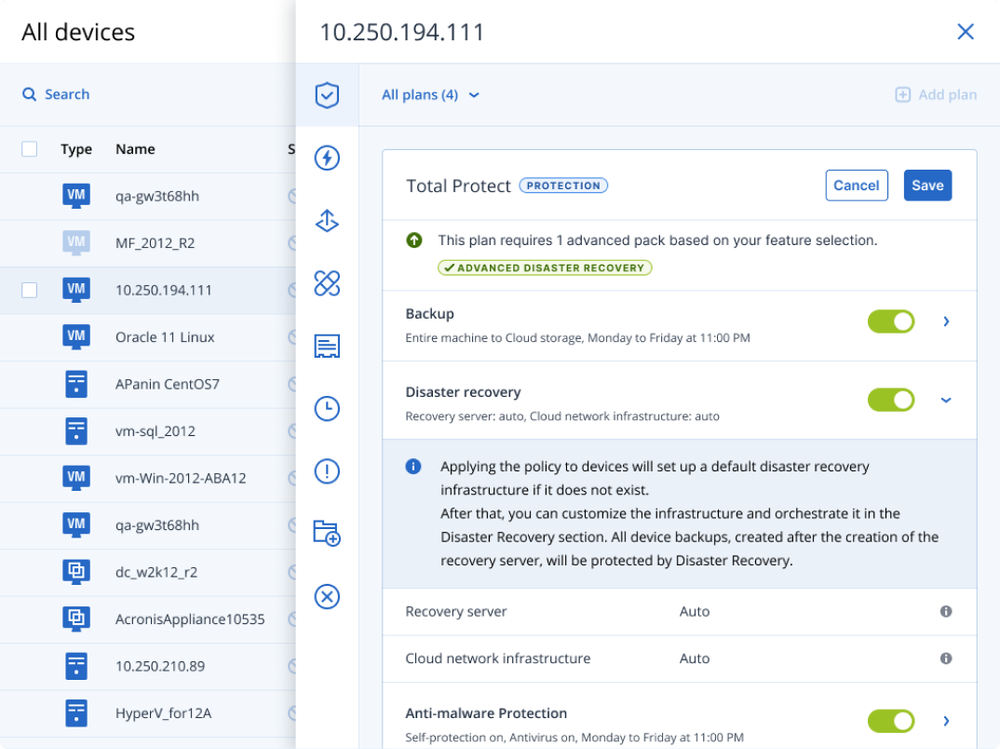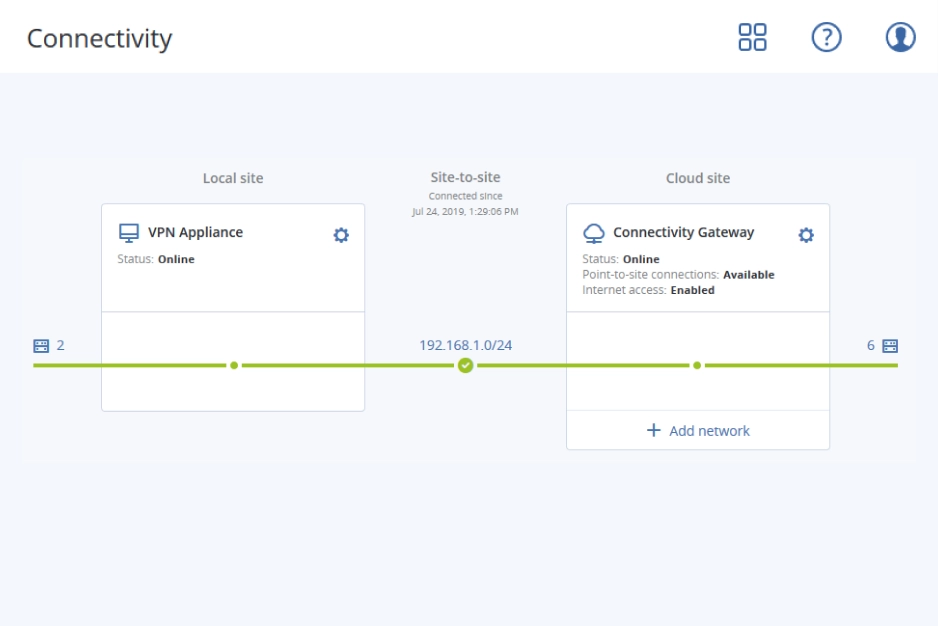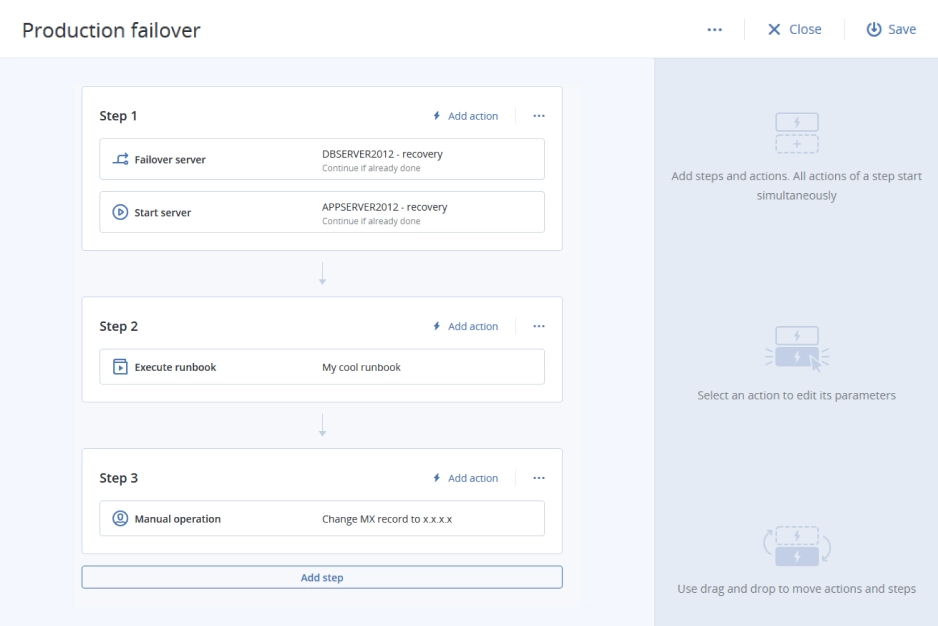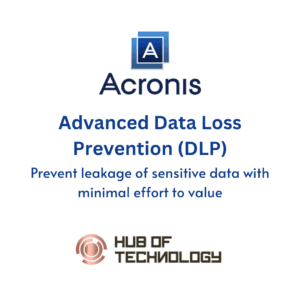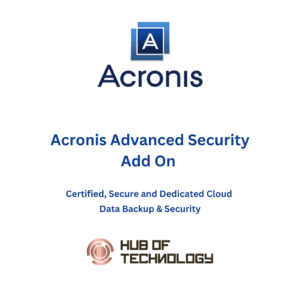Rapidly recover from cyberattacks and other unplanned outages
-
Simplify disaster recoveryEnable disaster recovery in a few clicks — without any capital investments needed upfront.
-
Grow recurring revenueDeliver complete protection against today’s threats — while increasing your monthly recurring revenue.
-
Ensure malware-free recoveriesPrevent reinfection by failing over to a malware-free recovery point (available with Advanced Security).
Businesses now face more threats than ever before. With Acronis, you can easily secure clients’ data and quickly return to a production-ready state in case of any disruption.
Get clients running in mere minutes by spinning up IT systems in the Acronis Cloud with full site-to-site connectivity and the ability to recover them to similar or dissimilar hardware.
Get peace of mind with Advanced Disaster Recovery
-
Complete protection in a single solution
Eliminate the need for multiple costly solutions and protect all workloads from a single interface. -
Out of the box DRaaS
Get started in three clicks with a software-only solution, without any hardware appliance installation. -
Zero upfront license investment
Control your costs with a flexible PAYG model, allowing for higher margins and better OPEX.
-
Disaster recovery for physical and virtual workloadsMinimize downtime by enabling easy, scalable and efficient cloud based recovery of all popular workloads including Windows and Linux physical servers and VMs, major hypervisors, and Microsoft apps.
-
Production failoverEnsure quick and easy automated failover of the client’s production environment to an offsite server running in the Acronis Disaster Recovery Storage or to a hot storage in the Acronis Cloud.
-
Site-to-site VPN connectionEnable secure VPN connection between the client’s local site and the cloud site to facilitate partial failover of tightly dependent servers on the local site. When one of the servers is recreated on the cloud site, the servers continue to communicate, ensuring minimal downtime.
-
Test DR readinessPerform DR testing in an isolated environment to confirm application availability, ensure compliance, and prove DR readiness — without any impact on production systems.
-
Execution monitoringGain visibility into disaster recovery orchestration with a detailed runbook-execution real-time view and execution history.
-
Point-in-time recoveryPrevent data loss and avoid data corruption with granularity of control over data protection and recovery capabilities. Restore systems and data to any recoverable point in the past, instead of to the latest one.
-
IPsec multisite VPN supportStrengthen security with IPSec multisite VPN support that integrates secure protocols and algorithms, so you can easily support clients with multiple sites that are hosting critical workloads with higher requirements for security, compliance and bandwidth.
-
Custom DNS configurationCreate custom DNS configurations for disaster recovery cloud services in the Acronis cloud. This enables you to easily adjust DNS settings for your clients – making it even easier for you to support them.
Cost-efficient and scalable Hybrid Disaster Recovery (DR)
Combine the full power of Acronis Advanced DR with your home network. One solution provides the best of both to protect client data, systems, and applications — achieving compliance, reducing latency, and optimizing costs.
-
GDPR, data sovereignty, and regulatory compliance
Deliver a full-featured DR solution that complies with geographic directives and industry best practices for financial, medical, consumer, and business data. -
When the cloud is just not fast enough
Some businesses, systems, and services require exceptional recovery SLAs. Eliminate latency risks by recovering locally. -
Economic optimization
Right-size hardware and reduce storage costs for low-risk and fault-tolerant use cases without compromising DR. Recover services with significant traffic in your own data center to manage recovery costs.
One solution for any workload
Physical and virtual machines
- Windows
- Linux
Virtualization platforms
- VMware vSphere
- Microsoft Hyper-V
- Oracle x86 VM Server
- Linux KVM
- Citrix XenServer
- Red Hat Virtualization
Applications
- Microsoft Exchange
- Microsoft Active Directory
- Microsoft SharePoint
- Microsoft SQL Server


